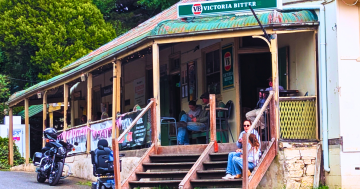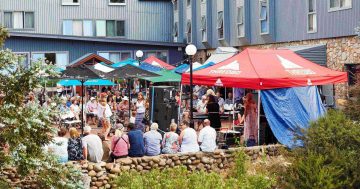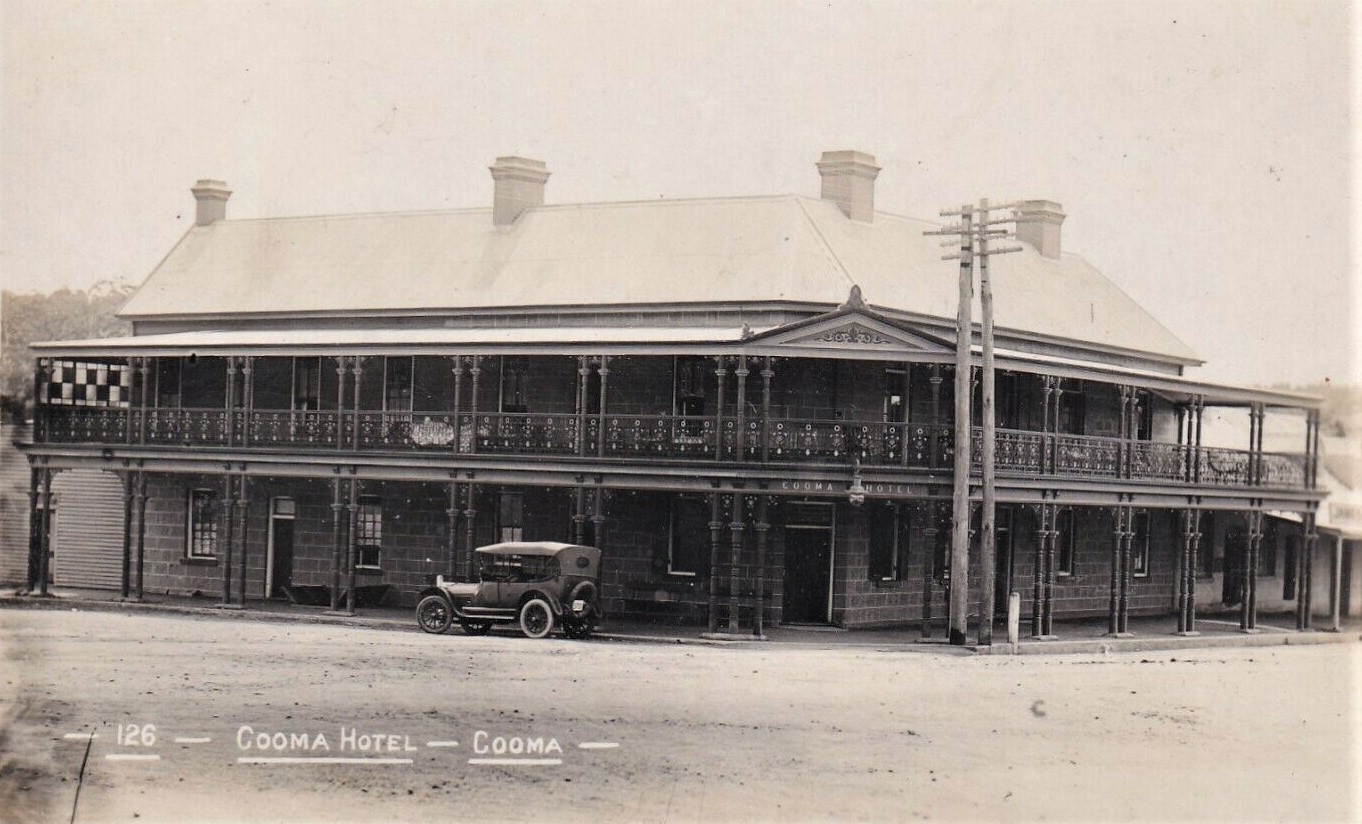
The Cooma Hotel as it stood prior to the verandah demolition orders. Photo: hwmobs, Flickr.
There was a period in time, not that long ago really, that our regional towns looked very different. Ornate Victorian verandahs lined our main streets. A second-floor verandah was commonplace, leading to living and accommodation areas situated above pubs and shops, and third-floor verandahs could be seen in our bigger town centres.
These verandahs survived past the Victorian era and, in many cases, well into the middle of the 20th century.
So where did they all go?
That’s a question I asked myself as I stood looking at the two-storey Cooma Hotel where a modern cantilevered awning sits in place of the original and ornate two-storey wrought iron Victorian verandah. The stone facade sits strangely exposed, like you caught your grandma in the hallway without her nighty on.
This building, and thousands of others around NSW, tell a story that is largely forgotten, of a time where council mandates destroyed our history in the name of fashion and supposed public safety.
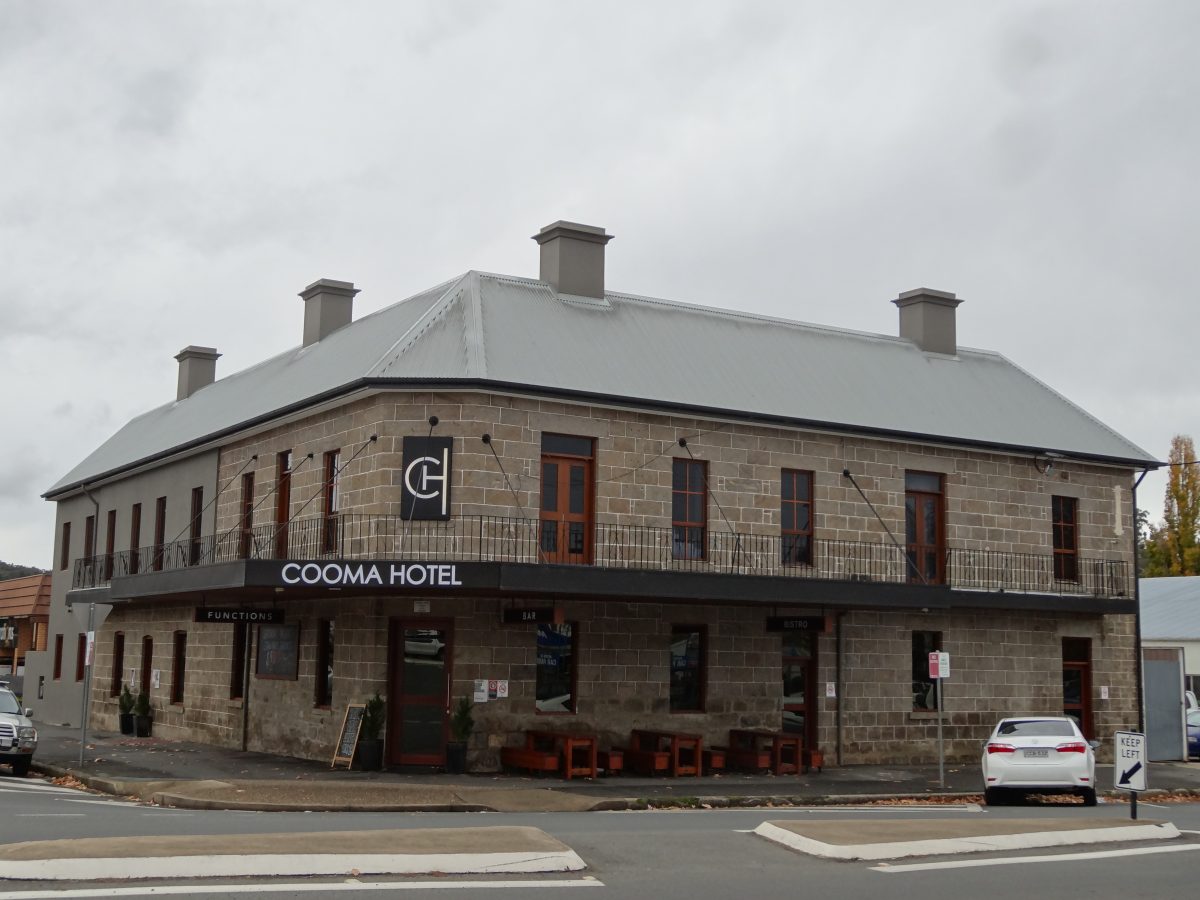
The Cooma Hotel shares the fate of commercial buildings all over NSW, denuded of its verandahs. Photo: denisbin, Flickr.
On Cooma’s main street, Sharp Street, the same story can be seen repeated again and again. Where once stood grand and ornate architecture designed to protect our earliest buildings from the harsh Australian sun now stands the reminders of a swathe of council-mandated demolition orders that are a testament to the fact that local council authorities don’t always get it right.
The loss of Cooma’s verandahs in the 1950s is acknowledged in one small sentence on a tourism heritage sign in the town’s centre. It states that the verandahs were deemed by the council to pose a hazard to cars. This belief spurred the implementation of a decree that required their removal.
With a little digging, snippets of this period in Australian history, that changed the face of our towns forever, can be found dotted through digitised newspapers from all over the state.
In the northern tablelands town of Armidale, as documented by a NSW Government Heritage document called Our History Our Stories, the first notices issued by the council to forcibly demolish street verandahs were served in 1932, with the council concerned about the practice of filling in balconies to create additional living space, which was creating a slum-like appearance to the town.
With 50 buildings affected by 1940, the council paused the mandate for the war and later resumed with the decree that all verandahs were to be gone by 1949.
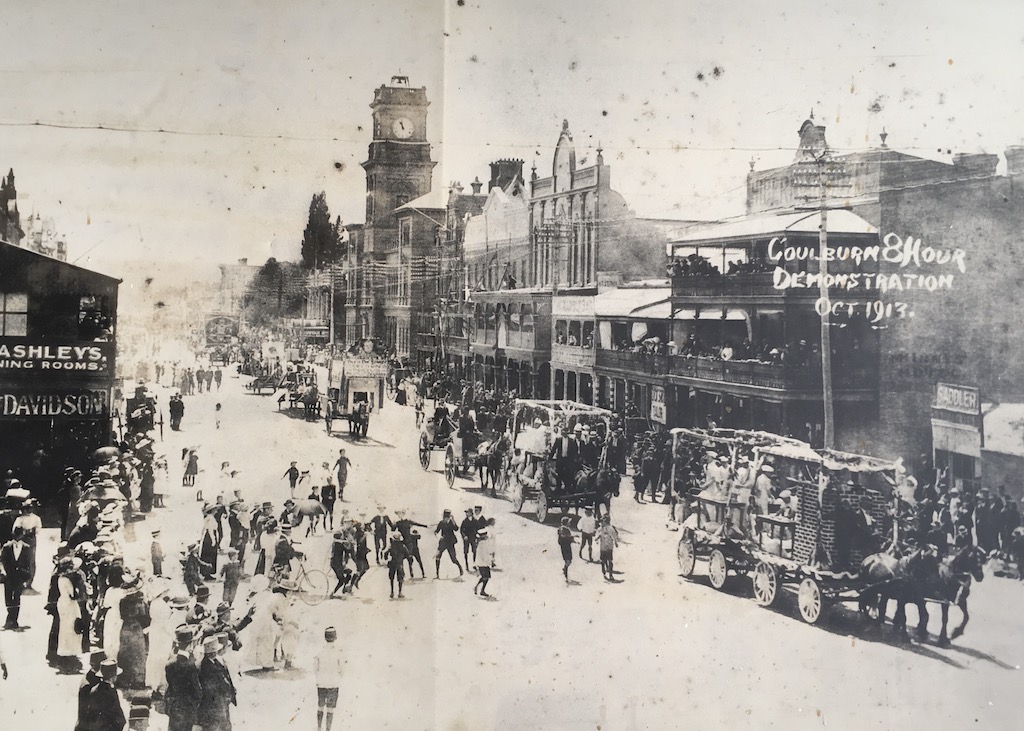
The Hibernian Hotel Goulburn can be seen on the right with its two tiers of verandahs along with many other Victorian verandahs in the street, photographed in 1913. The photograph is on display at the Paragon Cafe, Goulburn. Photo: Paragon Cafe.
Further south in the Southern Tablelands town of Goulburn, the mandate came in 1927 with a slow rollout of notices that were still being issued in 1935. It was thought that the measures were to modernise and beautify the town, and it was noted at the time that the new cantilever awnings of the 1930s “served to brighten and modernise the city’s shopping area”.
Goulburn’s ample Victorian and Georgian pubs bear witness to the decree. The three-storey Hibernian Hotel notably shares the naked look of the Cooma Hotel, though from street level, the modern awning masks the exposed Georgian facade that once featured impressive verandahs for overnight guests and patrons to enjoy.
It wasn’t just our pubs that were denuded. Historical images of the town of Yass show a vastly different Comur Street streetscape prior to its 1950s verandah demolition mandate.
Despite opposition at the time by the National Trust as well as owners of businesses on the street, buildings such as the Oddfellow’s Hall lost their two-storey verandahs (later to be reinstated by owner Rosemary Hodgkinson in an extensive renovation in the early 2000s).
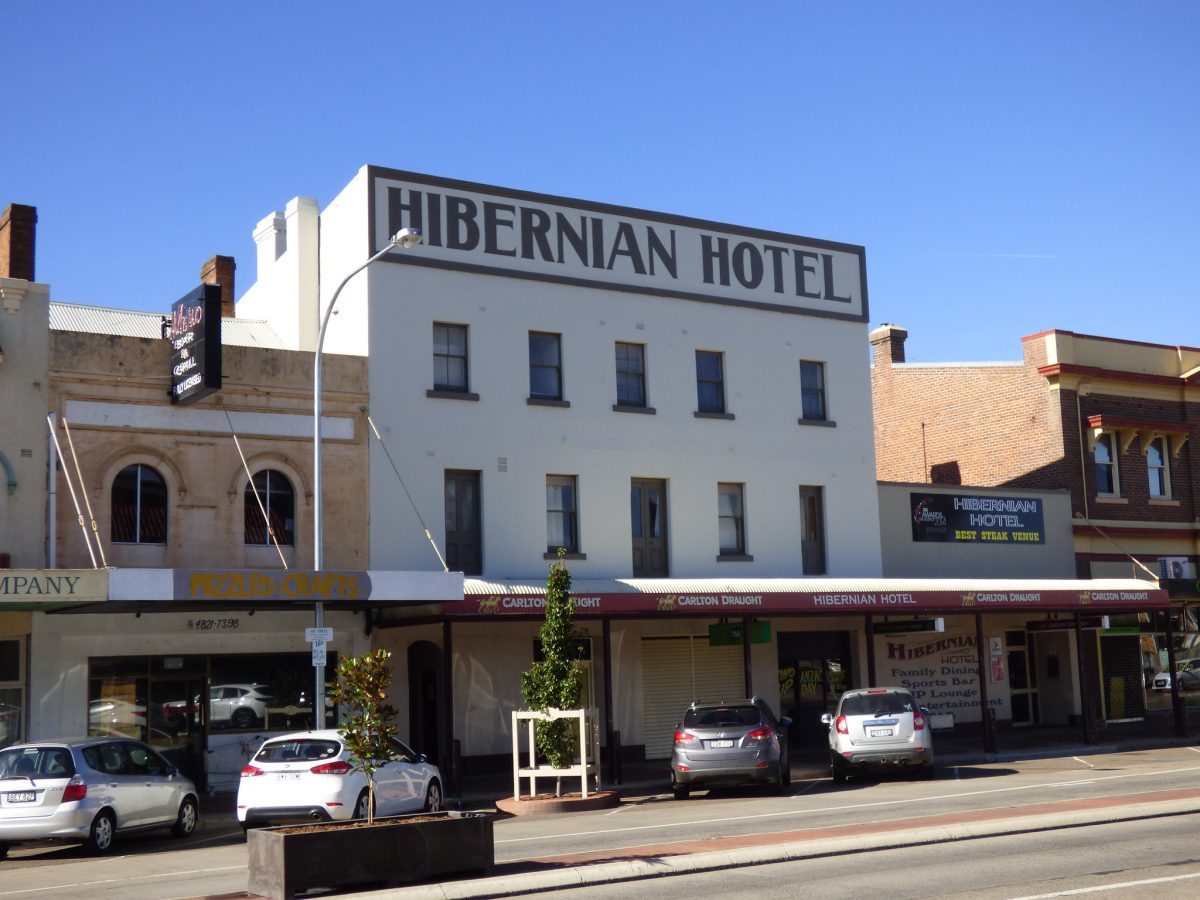
The Hibernian Hotel as it now stands denuded of its verandahs. Photo: Ivor Jones, Flickr.
An edition of the Macleay Argus from July 1952 tells of a legal stoush between the Dubbo Municipal Council and Toohey’s, which owned the Castlereagh Hotel, that shows the community did push back in many cases.
Council had ordered the removal of the verandah posts, and therefore the verandahs of the Castlereagh, in November 1951. Toohey’s took the matter to court, and the court ruled that the verandah remain as a protection to the external wall of the building and to help control the internal temperatures of the hotel.
The courts made a valid statement that they preferred to cooperate with the council but the council had not been able to show the continued existence of the verandah was a danger to the public, a statement that draws into question the motives of many of the councils who cited road hazards as the main motivator of their verandah demolition orders.
It’s hard to fathom the scope of what happened to our regional towns, but there are some rare cases that give us an insight into what many of our towns did look like before the heavy hand of council came to pass.
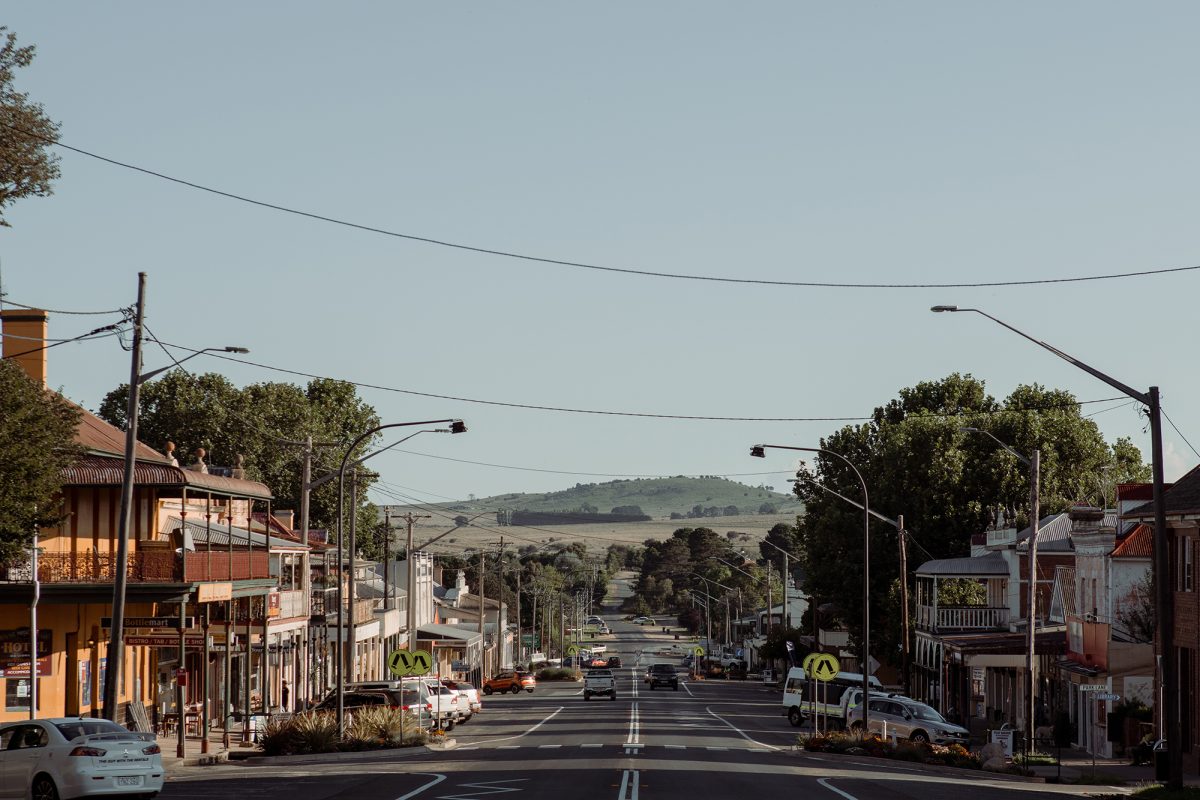
Braidwood retains many of its original verandahs, both Victorian and simpler timber Georgian verandahs. Photo: Mona Farm.
The Southern Tablelands town of Braidwood is credited with having retained its impressive verandah-lined main street due to an economic recession for much of the period in question. The streetscape lined with Georgian facades and their often accompanying timber verandahs, as well as the later Victorian wrought iron verandahs, was placed on the NSW Heritage Register in its entirety in 2006, a decision that is still referenced by Queanbeyan-Palerang council (QPRC) as causing major issues for the development of the town.
The lessons of the past are easily forgotten.
It’s come to light in recent weeks that the town of Bungendore, in the QPRC region, has no current heritage protections and that a six-year mission by the combined Queanbeyan-Palerang councils to create a heritage register has been mired in council workloads.
It’s a state of play that has stirred town outrage in the public’s fight to save a 1920s Gibraltar Street premises from demolition by developers who want to build a fourth medical centre in the town.
The fact that so few people know about the widespread council verandah mandates of the mid-20th century should be a warning for all future decisions surrounding our heritage, but the passing of time erases what is already gone and the saying stands true, you don’t know what you don’t know.







